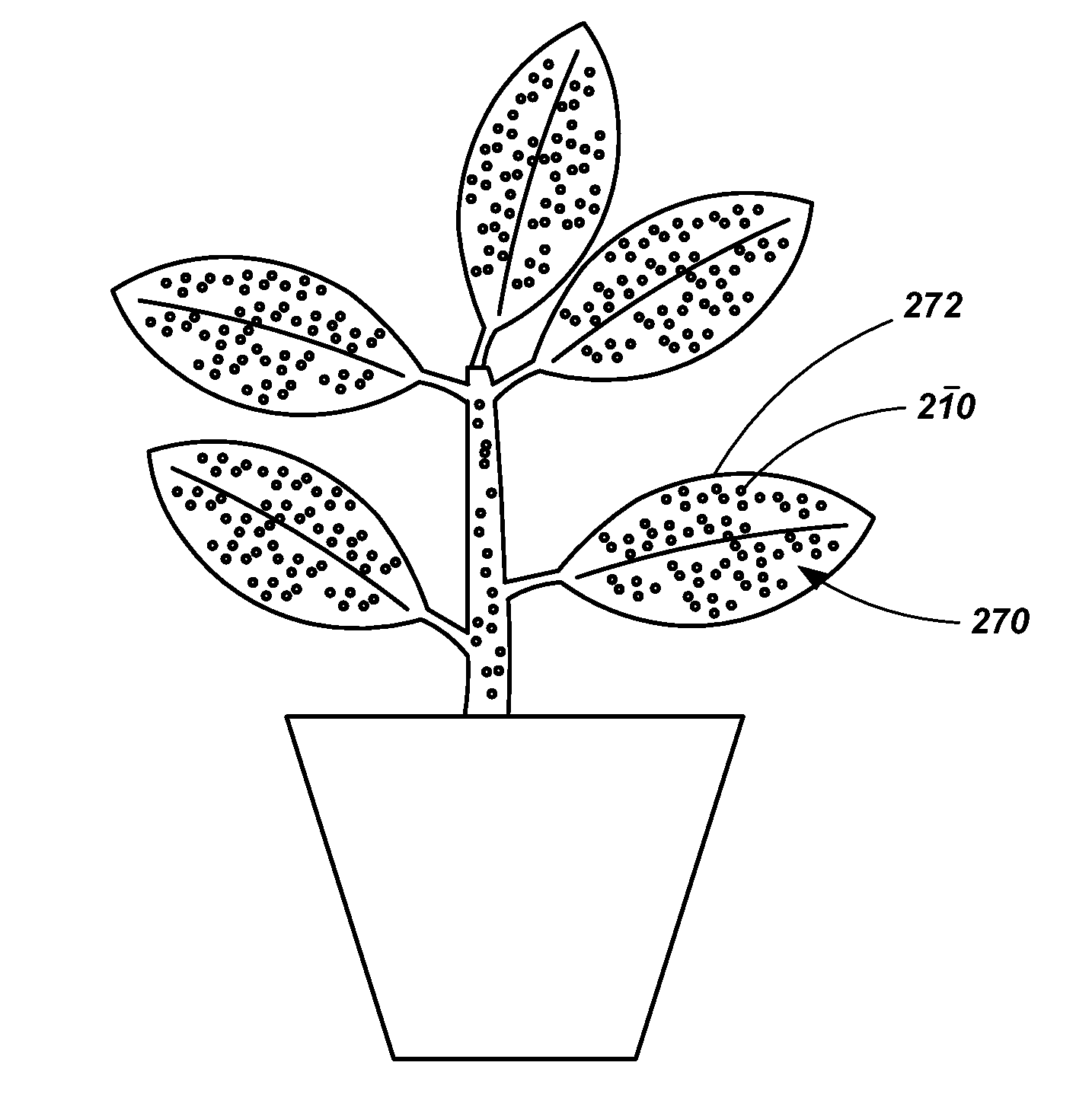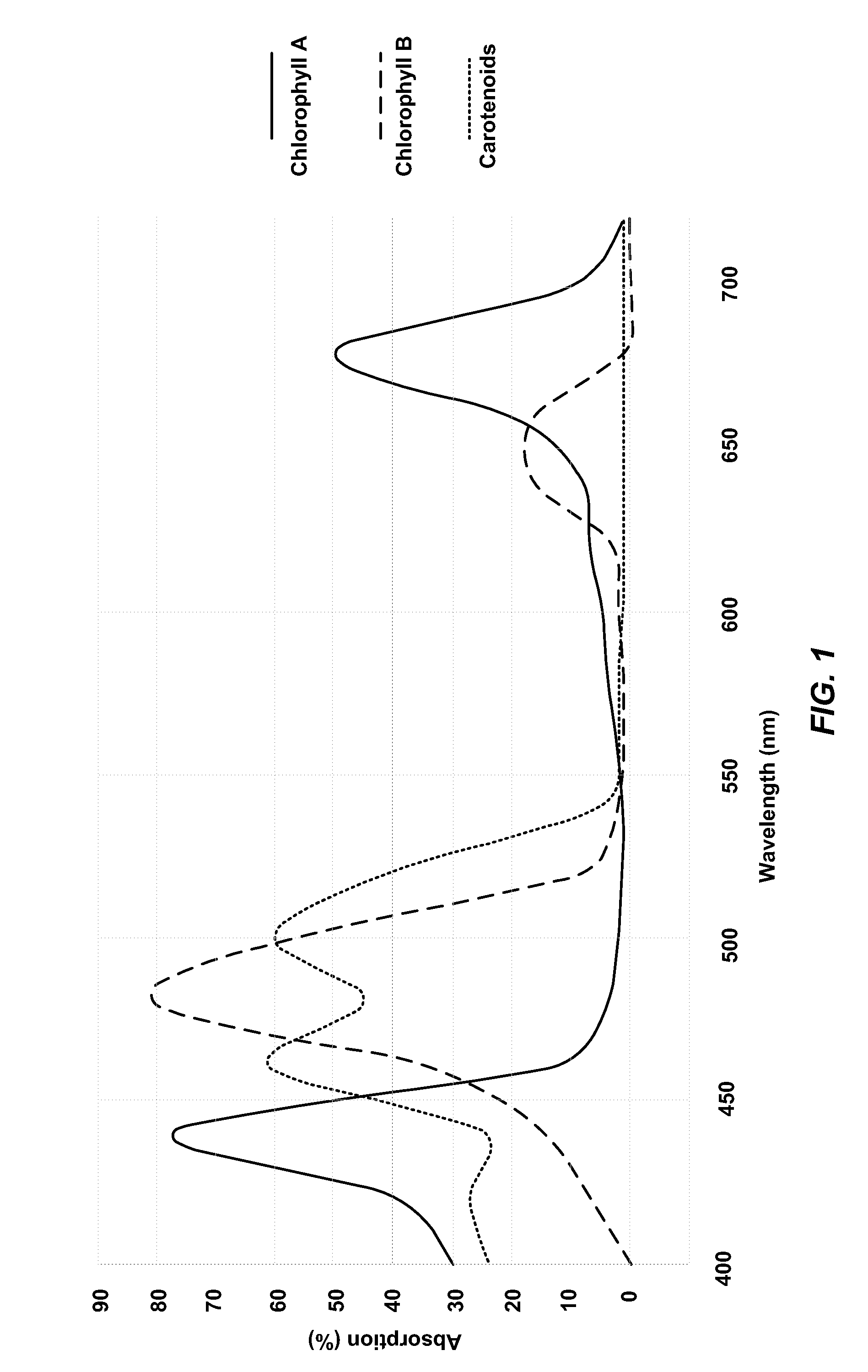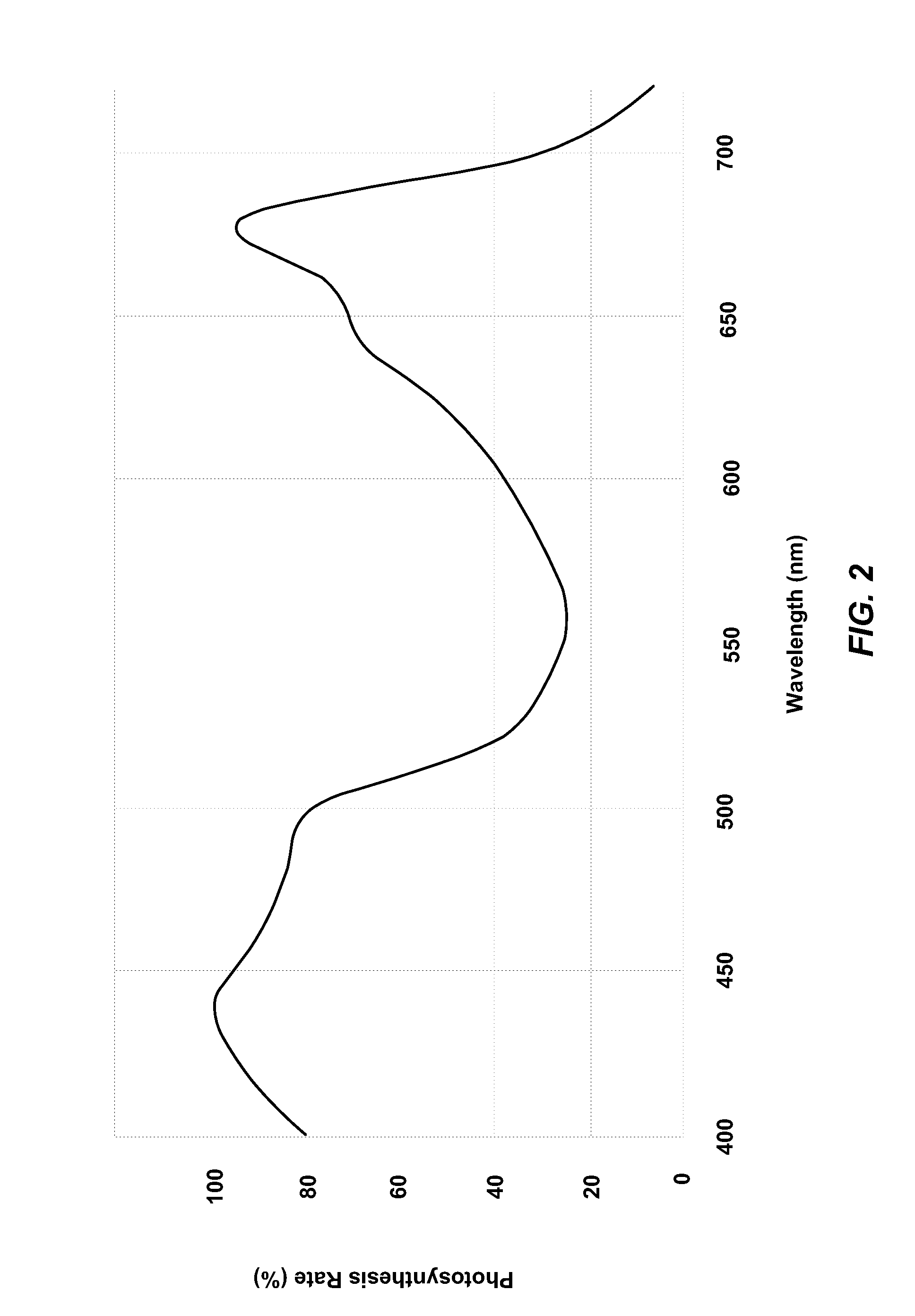Apparatuses, systems and methods for enhancing plant growth
a technology of plants and apparatuses, applied in the field of apparatuses, systems and methods for enhancing plant growth, can solve the problems of photochemical damage, disrupting plant dna, and affecting plant life, and the length of ultraviolet and infrared waves are mostly damaging to plant li
- Summary
- Abstract
- Description
- Claims
- Application Information
AI Technical Summary
Benefits of technology
Problems solved by technology
Method used
Image
Examples
example
[0090]The composite nanoparticle used in this experiment was prepared by NanoComposix of San Diego Calif. The nanoparticle was used to demonstrate energy shifting from one part of the spectrum to another. Specifications of the particle include:
Silica core Diameter (TEM)119.2 nmGold shell thickness 14.7 nmTotal diameter148.7 nm
[0091]The NPs were dispersed within a solution of approximately 80% glycerin and approximately 20% water by volume. This provided a refractive index of approximately 1.4. A tungsten halide light was used having a wavelength spectrum that ranged from approximately 400 nm to approximately 1100 nm, with a peak of about 670 nm. A scanning wide spectrum spectrophotometer was used to analyze the light and linearization correction factors were used for the spectral sensitivity, by wavelength, as supplied by the manufacturer. The results of the analysis are shown in FIG. 22 which shows substantial enhancement of the light output, for the spectrum of light analyzed (as ...
PUM
| Property | Measurement | Unit |
|---|---|---|
| thickness | aaaaa | aaaaa |
| thickness | aaaaa | aaaaa |
| wavelength | aaaaa | aaaaa |
Abstract
Description
Claims
Application Information
 Login to View More
Login to View More - R&D
- Intellectual Property
- Life Sciences
- Materials
- Tech Scout
- Unparalleled Data Quality
- Higher Quality Content
- 60% Fewer Hallucinations
Browse by: Latest US Patents, China's latest patents, Technical Efficacy Thesaurus, Application Domain, Technology Topic, Popular Technical Reports.
© 2025 PatSnap. All rights reserved.Legal|Privacy policy|Modern Slavery Act Transparency Statement|Sitemap|About US| Contact US: help@patsnap.com



